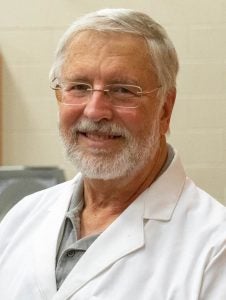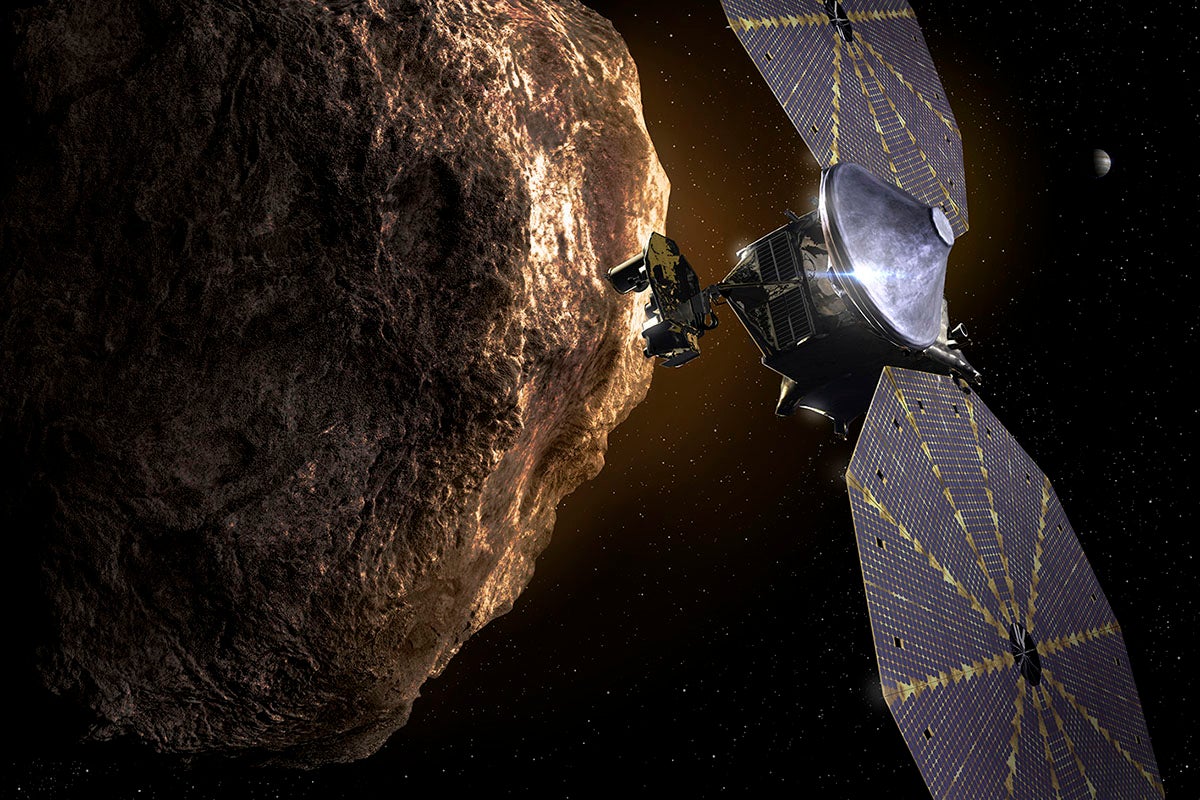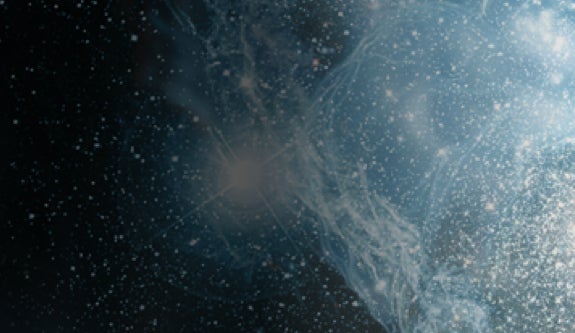UCF Physics Professor Dan Britt is counting down to Saturday morning when NASA’s Lucy mission is set to blast off from the Space Coast.
Britt, a physicist and geologist, is part of the science team that will analyze the data Lucy collects from the Trojan asteroids near Jupiter. This area of the solar system is believed to hold remnants of the primordial material that formed the outer planets and could hold some answers about how the solar system formed.
The spacecraft will visit eight asteroids in a region of space that has never been visited before. NASA refers to the more than 7,000 asteroids in this region “time capsules from the birth of our solar system.” The mission, led by Harold “Hal” Levison from the Southwest Research Institute in Boulder, Colorado, is named after Lucy — the fossilized human remains found in Ethiopia in 1974. The skeleton was critical to understanding certain stages of human evolution. NASA’s mission promises to provide similar insight about Earth and the solar system, Britt says.
“You get a great view from there,” Britt says. “It’s a bit of an early day with the launch window, but it will be worth it.”

Britt is no stranger to NASA missions. In 2012 when the Mars Curiosity rover landed and began beaming back rich photos of the planet’s surface, it was in large part thanks to Britt we were able to see the colors. He invited the color calibration targets on the rover. Britt also leads the NASA-funded Center for Lunar and Asteroid Surface Science (CLASS) based at UCF.
The main reason Britt was asked to join the team was because he and his former student Robert Macke ’10PhD, who studied physics, have analyzed and documented the density and porosity of 1,500 meteorites that represent the asteroids. You could say he is one of the foremost experts on alien rocks. Macke is now the curator of the Vatican Meteorite Collection.
Britt’s role during the Lucy mission will be to work with the other scientists and try to figure out what the Trojan asteroids are made of and why they are composed that way. By understanding the density of asteroids and their structures, scientists will better understand how they were created and evolved over time.
Unlike NASA’s OSIRIS REx mission (also includes a UCF researcher), which collected an asteroid sample, Lucy will provide digital data, which Britt and others will analyze. The Trojans are just too far away.
“This mission is another way to learn about our solar neighborhood,” Britt says. “Discovery is a whole lot of fun and the funny thing is that we know a bit about the laws of nature, but we don’t really know which rules apply more given any particular situation. We have some educated guesses, but until we get there, we won’t know for sure.”







